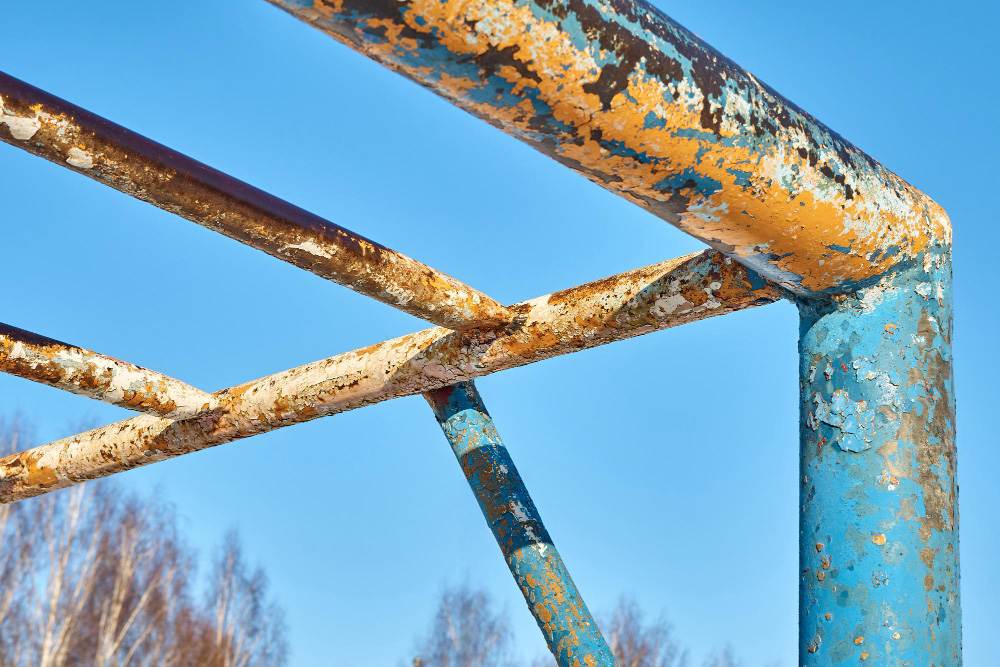Steel is a widely used material in construction due to its strength, durability, and versatility. However, one of the biggest challenges faced by steel structures is corrosion, which can compromise their integrity over time. Corrosion occurs when steel is exposed to moisture, oxygen, and other environmental factors, leading to the formation of rust and the weakening of the structure. To ensure the longevity of steel structures, it is essential to implement effective protection measures. Here are some of the most reliable methods for protecting steel structures from corrosion.
1. Galvanization
Galvanization is one of the most common and effective ways to protect steel from corrosion. This process involves coating the steel with a layer of zinc, which acts as a protective barrier. The zinc prevents moisture and oxygen from reaching the steel surface, significantly reducing the risk of corrosion. Even if the coating is damaged, the zinc continues to protect the steel through a process called cathodic protection. Galvanized steel is widely used in outdoor applications such as bridges, railings, and building frames.
2. Protective Coatings
Applying protective coatings, such as paint or epoxy, is another effective method of corrosion prevention. These coatings form a physical barrier between the steel and the environment, preventing moisture and oxygen from coming into contact with the steel surface. Depending on the environment in which the steel structure is located, different types of coatings can be applied. For example, marine-grade paints are used in coastal areas where saltwater accelerates corrosion. Regular maintenance and reapplication of the protective coating are essential to ensure long-lasting protection.
3. Cathodic Protection
Cathodic protection is a method that prevents corrosion by converting the steel surface into the cathode of an electrochemical cell. This is achieved by attaching a more easily corroded “sacrificial metal” (such as zinc or magnesium) to the steel structure. The sacrificial metal corrodes instead of the steel, offering protection against rust. This method is commonly used in pipelines, underground tanks, and marine structures.
4. Weathering Steel (Corten Steel)
Weathering steel, also known as Corten steel, is an alloy that forms a stable rust-like appearance after exposure to the elements. Unlike ordinary steel, the corrosion that forms on weathering steel protects the structure from further corrosion. This material is ideal for outdoor structures such as bridges and building facades where a rustic, industrial aesthetic is desired. However, weathering steel is not suitable for highly corrosive environments, such as coastal areas, without additional protection.
5. Regular Maintenance and Inspection
Regular maintenance and inspection are critical for identifying early signs of corrosion and addressing them before they cause significant damage. Steel structures should be inspected for rust, peeling paint, or any other indication of protective coating failure. Any damaged areas should be promptly treated and repaired to prevent further corrosion. Additionally, cleaning the steel surface regularly to remove contaminants like salt, dust, and chemicals can help prolong the life of the structure.
6. Corrosion Inhibitors
Corrosion inhibitors are chemicals that can be applied to steel surfaces or added to coatings and paints to slow down the corrosion process. These inhibitors work by forming a protective film on the steel surface, blocking moisture and oxygen from reaching the metal. They are commonly used in conjunction with other protective methods, such as paints or coatings, to enhance corrosion resistance.
Conclusion
Protecting steel structures from corrosion is essential to maintaining their strength, safety, and longevity. By implementing effective measures such as galvanization, protective coatings, cathodic protection, and regular maintenance, the lifespan of steel structures can be significantly extended. At CMTC, we specialize in providing a wide range of corrosion protection solutions tailored to meet the specific needs of various environments and industries. Contact us today to learn more about how we can help protect your steel structures from corrosion.





